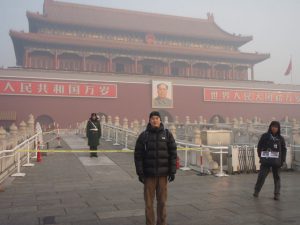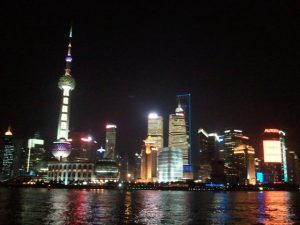Recently, I took a trip to China and it encouraged to me to reflect on Capitalism and our American society.

There’s no denying that we have more economic freedom here in the USA compared to many other countries around the world. Lately however, there has been some backlash against extreme Capitalism here. A shrinking middle class, sustained high levels of unemployment, and growing inequality between the rich and the poor has eroded confidence in the system for which we Americans have based our country’s success on. Lately, I too have been wondering, is Capitalism really the end game or is just some meta-game strategy that will evolve into something else?

I was taught that Adam Smith’s “invisible hand” is a self-regulating market mechanism. Combined with free-trade, it naturally moves the world into supply and demand equilibrium and maximizes the global production possibilities frontier. Ok, I can get on-board with that idea. Much of our high standards of living and vast economic wealth can be attributed to the effect of Capitalism on our society. But somehow, I feel that there’s a missing piece.

In order for there to be a virtual utopia of economic freedom and flexibility is there some shadow dystopia that goes along with it? As alluded to in Alex Huxley’s, “A Brave New World,” Capitalism may not be the solution to the social riddle. How do you account for the short-term pain associated with a flexible capitalist system? What happens when companies restructure to remain in equilibrium with the changing global supply and demand equation? Correct me if I’m wrong, but I think that economics assumes incremental changes over time; a slow and gradual progression from one phase to the next; in reality, we know this is not always the case.

During the past decade, there have been examples of very abrupt economic shifts. The shifts that you are most aware of, are in industries in which we deem a few companies to be “too big to fail.” The General Motors bankruptcy and liquidation would have been inline with our Capitalist principles but the social ramifications of it were so large that they could not be ignored. A huge shift in structural unemployment, an implosion of US manufacturing, and drastic knock-on effects were all of a sudden, not so invisible.

Ok, so what now? Society likes the principles of Capitalism and enjoys the economic liberty that comes with it, but at some point, it is also willing to stand up against those same principles for the social good and temporarily ignore the equilibrium outlined by supply and demand. There must exist some balance between social welfare and Capitalism that’s ideal. As Americans bounce back from extreme Capitalism and start to incorporate more social elements into our equation, the Chinese are doing the opposite. I can only wonder when we will meet in the middle and what that world will look like.
Over the next few years, as our government tries to hash out allocations to Social Security, Medicare, and Unemployment, we need to ask ourselves what we really want our society to look like and how much pain is acceptable for our society to continue to function and grow. I, for one, wish for a harmonious balance where everyone can live without economic oppression and still have the unlimited upside associated with our hopes and dreams.

